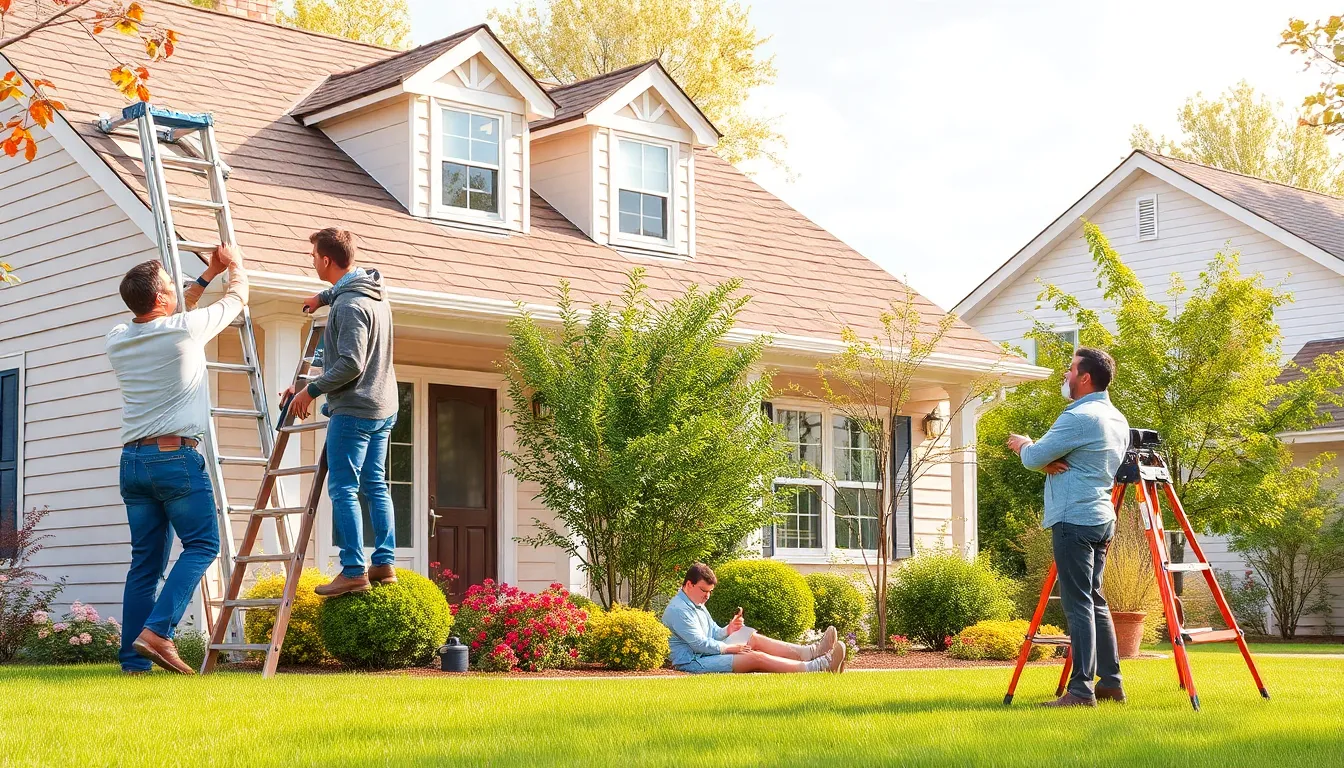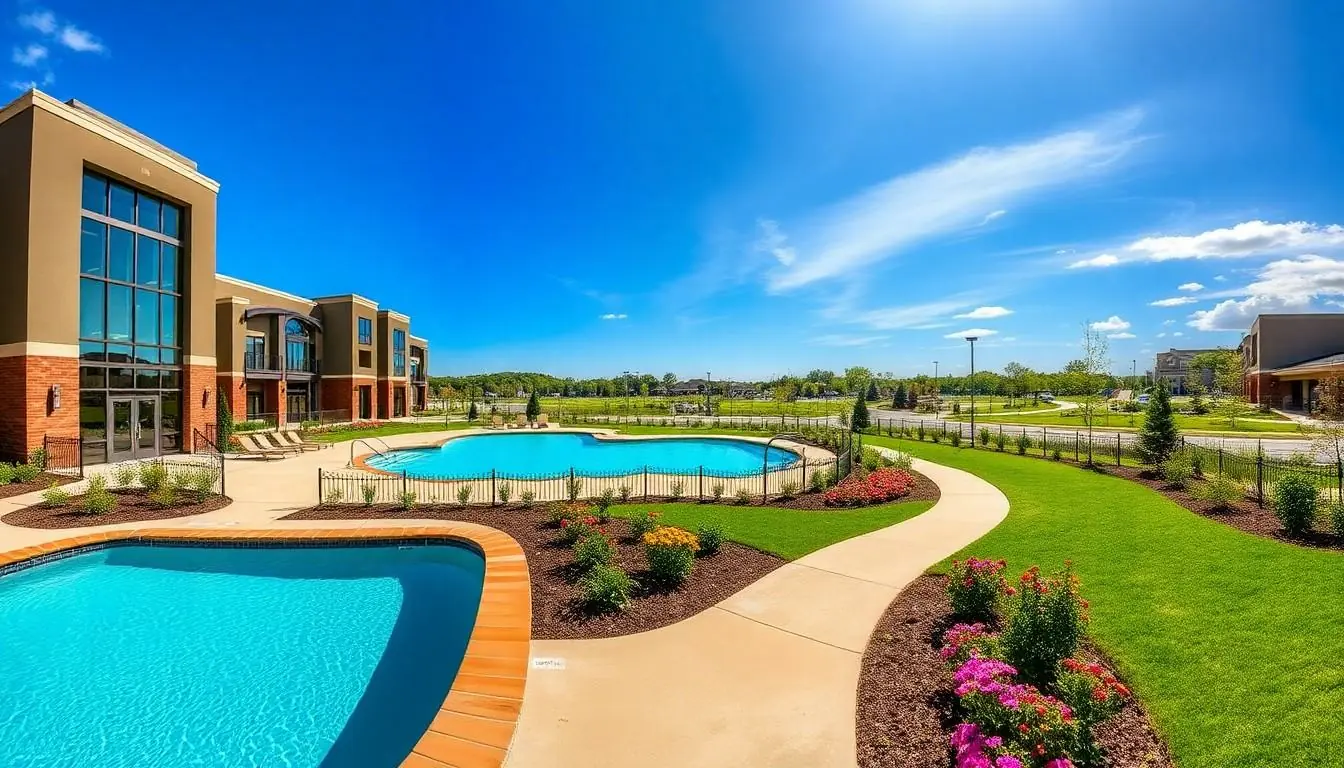Owning a home can feel a bit like adopting a pet—full of joy but also a whole lot of responsibilities. Just like that furry friend needs regular vet visits, homes need their yearly check-ups too. A yearly home maintenance checklist is your trusty guide to keeping your castle in tip-top shape. It’s like a spa day for your house, ensuring everything runs smoothly and looks fabulous.
Table of Contents
ToggleImportance Of A Yearly Home Maintenance Checklist
A yearly home maintenance checklist keeps homes functioning optimally. Routine inspections can prevent costly repairs down the line. Checking essential systems early can lead to extended lifespans for appliances and infrastructure. Homeowners benefit from increased safety through regular maintenance, decreasing chances of accidents caused by neglect.
Scheduling tasks seasonally offers a structured approach to home care. With a plan in place, homeowners avoid overwhelming workloads. Identifying issues early ensures timely resolutions, contributing to better home value over time. Properties maintained regularly fetch higher prices on the market, making this checklist a smart financial strategy.
Neglecting maintenance often leads to major repairs that burden budgets. Home inspections reveal potential problems that require immediate attention, from roofing to plumbing. Completing seasonal tasks promotes a comfortable living environment, enhancing overall quality of life.
Prioritization of tasks in the checklist forms a proactive habit for homeowners. Investing time in maintenance yields peace of mind, knowing homes are safe and well-cared for. Altogether, a yearly checklist serves as an essential tool, guiding homeowners toward ensuring their houses function as intended year-round.
Seasonal Maintenance Tasks


Seasonal maintenance tasks ensure homes remain in optimal condition throughout the year. Tasks scheduled by season help homeowners manage responsibilities effectively.
Spring Maintenance Checklist
Inspect the roof for damage after winter storms. Clear gutters to prevent water damage and ensure proper drainage. Check outdoor faucets for leaks and repair them if needed. Fertilize lawns and prune trees to encourage growth. Test the air conditioning system to confirm it operates efficiently before summer heat arrives.
Summer Maintenance Checklist
Examine home exteriors for peeling paint or signs of wear. Clean and seal decks to protect against moisture damage. Check window screens and replace any that are torn. Adjust sprinklers for optimal coverage of lawns and gardens. Review smoke detectors and replace batteries to enhance safety.
Fall Maintenance Checklist
Clean the chimney to prevent fires and ensure safe use of fireplaces. Inspect roofing for issues, addressing any shingles that appear loose. Flush the water heater to remove sediment buildup and maintain efficiency. Rake leaves to prevent drainage clogs and mosquito breeding. Winterize outdoor plumbing by shutting off faucets and draining hoses.
Winter Maintenance Checklist
Inspect insulation to ensure homes stay warm and energy-efficient. Clear snow and ice from walkways and roofs to prevent damage. Test heating systems to confirm they operate effectively. Check batteries in carbon monoxide detectors for safety. Keep sidewalks clear for accessibility and safety during snow events.
Safety Inspections
Safety inspections focus on critical systems within a home. Regular evaluations ensure the integrity and functionality of electrical and plumbing systems.
Electrical Systems
Inspecting electrical systems is vital for maintaining safe environments. Examine outlets, switches, and wiring for signs of wear or damage. Ensure circuit breakers function properly and replace any that trip frequently. Test smoke detectors and carbon monoxide detectors to guarantee they operate correctly. Confirm that extension cords are not overloaded and replace frayed or damaged cords immediately. Addressing these aspects prevents electrical fires and enhances overall safety within the home.
Plumbing Systems
Conducting plumbing inspections helps prevent costly water damage. Examine visible pipes for leaks or corrosion. Inspect fixtures such as sinks, toilets, and showers for proper operation and leaks. Ensure that water pressure is consistent and that drains flow freely. Flush water heaters to remove sediment buildup, promoting efficiency. Address slow drains and unusual odors promptly, as these can indicate more significant issues. Maintaining these systems contributes to a well-functioning and safe home environment.
Exterior Maintenance
Exterior maintenance plays a crucial role in preserving a home’s integrity and appearance. Regular upkeep protects against weather damage and enhances curb appeal.
Roof and Gutters
Inspect roofs for missing or damaged shingles. Frequent checks can help prevent leaks and structural issues. Clear gutters of debris to promote proper drainage. Clogged gutters often lead to water overflow and foundation problems. Check downspouts to ensure they direct water away from the home. Maintaining roof and gutter systems safeguards against long-term damage and costly repairs.
Siding and Windows
Evaluate siding for signs of damage, such as cracks or warping. Addressing these issues promptly maintains energy efficiency and protects against pests. Repaint or reseal faded sections to enhance visual appeal. Inspect windows for broken seals or cracks, which can lead to air leaks. Replace damaged screens and verify that windows open and close smoothly. Adequate maintenance of siding and windows contributes to a comfortable and attractive living environment.
Interior Maintenance
Interior maintenance is essential for ensuring a comfortable living space and promoting the longevity of home systems. Paying attention to critical systems and appliances keeps them functioning efficiently throughout the year.
Heating and Cooling Systems
Inspecting heating and cooling systems prevents unexpected breakdowns. Start with changing or cleaning filters to improve indoor air quality and system efficiency. Checking thermostat settings ensures proper functioning, while testing both heating and cooling operations confirms optimal performance. Examine ductwork for leaks or blockages, which can waste energy and affect air distribution. Lastly, scheduling professional maintenance enhances overall system longevity.
Appliances and Fixtures
Evaluating appliances and fixtures promotes safety and efficiency. Begin by checking refrigerator seals to ensure energy savings and food safety. Testing smoke detectors and carbon monoxide detectors is crucial for household safety. Cleaning the dishwasher and inspecting the washing machine hoses can prevent water damage and maintain efficiency. Flushing faucets and showerheads removes mineral buildup, ensuring proper water flow and pressure. Prioritizing these tasks helps maintain a smoothly running home.







